Ankh Spread
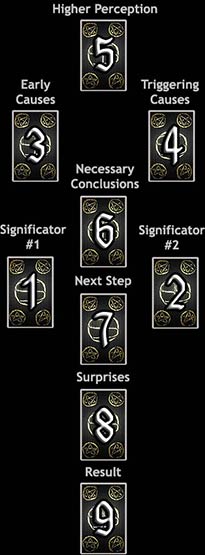
Difficulty: Kind of tough
The Ankh Spread is for questions about the causes behind trends. It is similar to the Celtic Cross and Secret of the High Priestess spreads, but it covers the reasons behind the circumstances in question differently, perhaps giving a better explanation of why things are the way they are.
The loop of the upper section of the ankh reveals the spiritual background and causes of the situation, while the stem of the base focuses on prospects for the outcome.
The first two tarot cards represent the two parent causes of the situation. They will either complement each other or show two opposing sides of a conflict, depending on how they relate. These are the significator cards of the Ankh spread.
3. This tarot card shines light upon the early causes of the trend in question.
4. Pinpoints the causes that triggered the current situation.
5. Reveals the spiritual perspective of the subject at hand.
6. This card examines the reasons why this course of action had to unfold, as a means to this end.
At this point, it is good to pause to soak in the meaning of the first six cards before moving forward to the last three cards. The last three reveal prospects for the future.
7. The Next Step gives clues about the immediate future.
8. Surprising Experiences encountered en route to the result.
9. This represents the result.
Your Ankh Reading
| Early Causes | Higher Perceptions 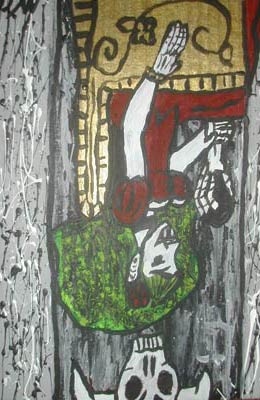 III. The Empress |
Triggering Causes |
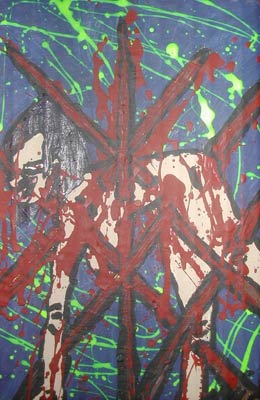 Six of Stakes |
Necessary Conclusions | 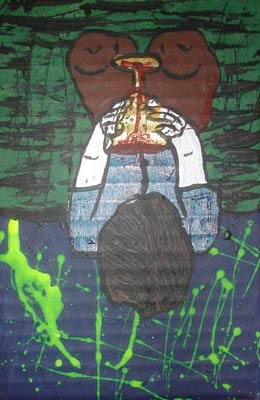 Page of Cups |
| Significator #1 |  Six of Swords |
Significator #2 |
 Three of Cups |
Next Step | 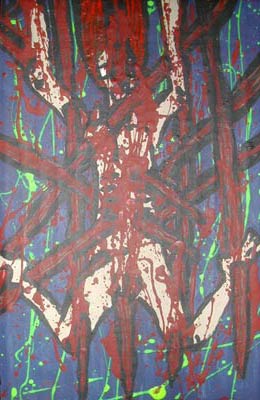 Nine of Stakes |
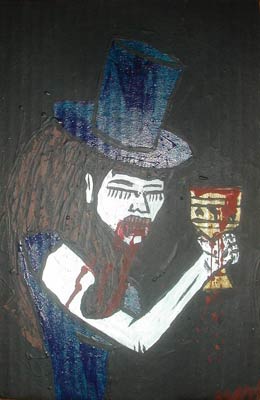 Queen of Cups |
||
Surprising Experiences 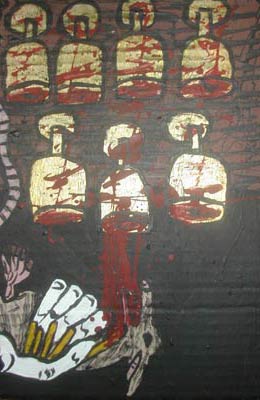 Seven of Cups |
||
Outcome 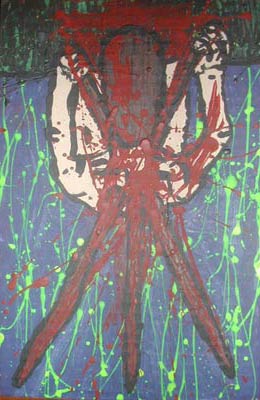 Three of Stakes |

Significator #1
Three of Cups
Reversed
Symbolism:
Two overturned cups are washed clean, and a third toppled cup spills its all-seeing contents. The imagery suggests the end of a cycle, with emotions spilling over, marking a time for reflection, conclusion, and understanding.
Meaning:
The Three of Cups signifies celebration, community, and emotional fulfillment. It represents joyous reunions, friendship, and collective happiness. This card often points to success in group efforts or the enjoyment of time spent with loved ones, signaling an end to struggles and a period of peace.
Reversed, it points to excessive indulgence, gossip, or a disconnection from others. It warns of an unhealthy focus on physical pleasures over emotional well-being.
Keywords:
Reversed: Excess, gossip, overindulgence, disconnection, unhealthy focus.

Significator #2
Nine of Stakes
Reversed
Symbolism:
A grotesque figure hangs upside down, pierced by nine stakes in a horrific display of defiance and suffering. The unsettling scene illustrates the resilience required to endure opposition and remain steadfast in the face of challenges.
Meaning:
The Nine of Stakes is a card of resilience and strength under pressure. It symbolizes the final push before success, encouraging you to persevere despite fatigue or hardship. This card warns of challenges but assures you that your determination will see you through.
Reversed, the card signals obstacles, delays, or setbacks. It may also indicate a need for rest or recovery before resuming the fight.
Keywords:
Reversed: Setbacks, fatigue, delays, obstacles, vulnerability.

Early Causes
Six of Stakes
Symbolism:
A female cadaver, suspended by six stakes, serves as a macabre warning to all who pass. The stakes are arranged as a barrier, both defensive and triumphant, symbolizing victory achieved at a great cost. The ominous scene speaks of hard-won triumphs and the fulfillment of one's ambitions, albeit shadowed by loss.
Meaning:
The Six of Stakes signifies triumph and recognition. It represents a well-earned victory and the satisfaction of achieving goals through perseverance and hard work. This card heralds positive news and fulfillment of long-held desires. It also reminds you to remain humble and grateful in success.
Reversed, the Six warns of delays, paranoia, or feelings of insecurity despite external achievements. It can also point to betrayal or fear of losing one's position.
Keywords:
Upright: Victory, recognition, accomplishment, good news, fulfillment, hope.
Reversed: Delays, fear, betrayal, disloyalty, insecurity.

Triggering Causes
Page of Cups
Reversed
Symbolism:
A young vampire sits in a prostate position, poised to consume a chalice filled with the most desirable sustenance. The image conveys a sense of eagerness and anticipation, focused on a new emotional journey or experience.
Meaning:
The Page of Cups represents youthful enthusiasm, creativity, and emotional curiosity. It symbolizes the beginning of new emotional experiences, such as love, art, or self-discovery. This card often represents an individual who is open-hearted, sensitive, and in tune with their emotions. It can also indicate a message or invitation related to feelings or creative pursuits.
Reversed, the Page of Cups suggests emotional immaturity, manipulation, or being too consumed by fantasy and illusion. It may indicate deception, emotional instability, or the inability to express one's true feelings.
Keywords:
Reversed: Emotional immaturity, manipulation, deception, instability, fantasy.

Higher Perceptions
III. The Empress
Reversed
Symbolism:
The Empress sits upon her throne, her presence commanding yet nurturing. She holds the Hand of Glory, a macabre artifact symbolizing her power to claim whatever she desires. Her surroundings are lush and fertile, with dark roses blooming amidst the decay—symbols of beauty and abundance arising from even the grimmest conditions. Her expression is one of calm authority, radiating life-giving energy.
Meaning:
The Empress represents creation, fertility, and the nurturing aspects of life. She signifies abundance and the ability to bring ideas, projects, or relationships to fruition. This card invites you to connect with your creative or maternal instincts and embrace the cycles of growth and renewal. It may also point to emotional or physical abundance and a celebration of life's pleasures.
Reversed, the Empress warns of stagnation, overbearing tendencies, or emotional imbalance. It may point to neglect, smothering, or difficulties in manifesting creativity.
Keywords:
Reversed: Stagnation, neglect, overbearing, creative block, emotional imbalance.

Necessary Conclusions
Six of Swords
Symbolism:
Six swords impale a young female from every direction, capturing the grim tragedy of a life prematurely lost. The scene evokes a visceral sense of waste, portraying the haunting consequences of decisions or unavoidable circumstances.
Meaning:
The Six of Swords represents transition, movement, and the pursuit of peace or resolution after difficulty. It often signals leaving behind a painful situation, not without scars, but with the hope of finding clarity or refuge. The imagery highlights the weight of such transitions, emphasizing the emotional toll of moving forward.
Keywords:
Upright: Transition, journey, resolution, moving forward, healing, clarity.

The Next Step
Queen of Cups
Symbolism:
The beautiful Queen of Cups toasts to the abundance of victims willing to sacrifice themselves for the vampires' pleasure. The Queen embodies nurturing energy but also the darker, seductive side of emotional power.
Meaning:
The Queen of Cups represents emotional wisdom, intuition, and nurturing. She is deeply connected to her emotions and offers guidance in matters of the heart. This card symbolizes compassion, empathy, and the ability to heal through love. The Queen also represents a woman who has a strong emotional presence and offers emotional support to those around her.
Keywords:
Upright: Emotional wisdom, intuition, compassion, nurturing, healing, emotional intelligence.

Surprises
Seven of Cups
Reversed
Symbolism:
An unfortunate vampire has run out of the “good stuff” and must now rely on less desirable means. The card hints at illusions and unattainable desires, emphasizing the fantasy of having everything.
Meaning:
The Seven of Cups is a card of illusions, choices, and confusion. It represents the overwhelming number of options or fantasies that may lead to unrealistic expectations. This card calls for discernment and clarity, urging you to focus on what truly matters rather than being distracted by distractions or fleeting desires.
Reversed, it signals a clearing of confusion, making important decisions, and taking practical steps toward goals. It can also represent clarity after a period of uncertainty.
Keywords:
Reversed: Clarity, decision-making, focus, discernment, realistic goals.

The Outcome
Three of Stakes
Reversed
Symbolism:
Three stakes pierce a human figure's neck, transforming them into a grotesque scarecrow. The haunting scene evokes the toil and sacrifice required to achieve one's ambitions. The stakes symbolize strength in numbers and the effort needed to succeed, even when the journey feels grueling.
Meaning:
The Three of Stakes represents teamwork, effort, and the establishment of solid foundations. It is a card of growth and progress, highlighting the importance of collaboration and persistence in achieving long-term goals. This card encourages you to rely on allies and work together to achieve success in endeavors involving commerce, trade, or creative ventures.
Reversed, it suggests that relief from difficulties is near, but progress may be stalled due to unresolved issues or lack of effort.
Keywords:
Reversed: Delay, obstacles ending, loss of direction, missed teamwork.
